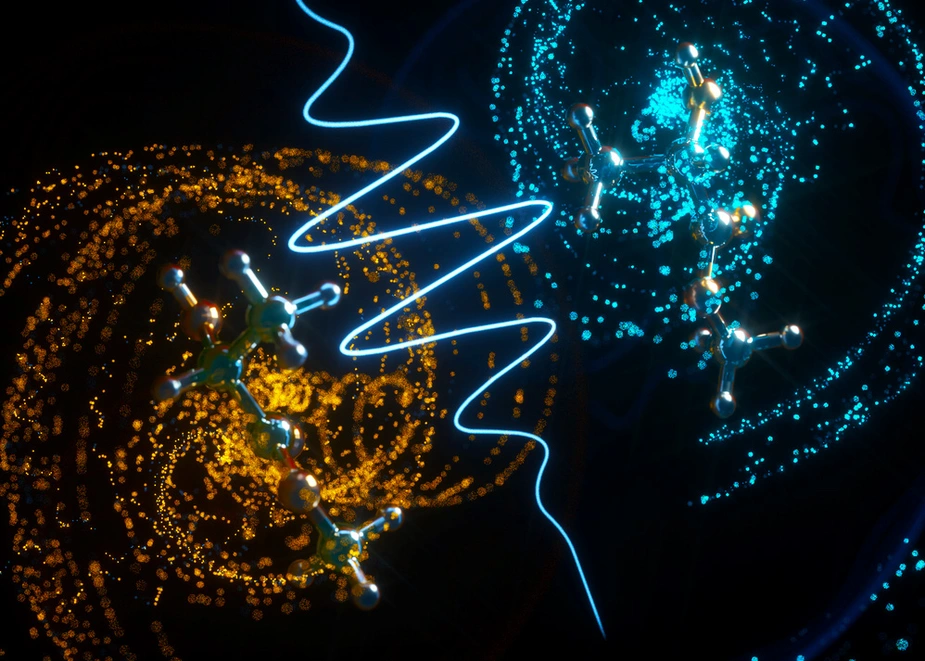Scientists decipher the contribution of electrons to molecular chirality
A new approach offers a way to control physical and chemical properties that result from chiral interactions
A new experimental approach provides the long-awaited tools to understand the role of electrons in the molecular chiral reactivity and offers a way to control physical and chemical properties that result from chiral interactions. The study, published in the journal “Nature”, was led by Universität Hamburg and DESY as part of a collaboration with the Centre Laser Intense et Applications (CELIA) and the Laboratoire de Chimie et Physique Quantiques (LCPQ) in France and the Max Born Institute (MBI) in Berlin.
Molecular chirality is of paramount importance in nature: Two molecules that are mirror images of each other and that cannot be superimposed form a pair of enantiomers, each of which is said to be chiral. Like choosing between our chiral left or right hand for a handshake, choosing one of the enantiomers to interact with another chiral entity will result in a different outcome. Because life is homochiral, i.e. structured and configured in the same way, there is only one dominant enantiomeric form for each class of our own biomolecules (amino acids and sugars), making chirality a key property for drug design, among several other applications.
The static and dynamic properties of chiral molecules can be shaped by using light. So far, only the light-activated structural dynamics have been considered to affect the chiral response of molecules. This leaves a fundamental question unanswered: What is the impact of electron dynamics on molecular chirality?
Using ultrashort ultraviolet light pulses, the team initiated ultrafast electron migration in neutral chiral molecules. They discovered that the activated coherent electronic motion can modulate the molecular chiral response and even induce a sign reversal, on a timescale below 10 femtoseconds. “By engineering the light-induced excitation, we can make the right enantiomer act periodically like the left one and vice versa, without changing its structure”, says first author Vincent Wanie, a Scientist in the Attosecond Science group at the Center for Free-Electron Laser Science. This was observed by measuring in time the emission direction of photoelectrons produced when ionizing chiral molecules with circularly polarized light, which is also chiral, a technique called photoelectron circular dichroism (PECD).
“Importantly, through numerical calculations complementing the experimental work, we also discovered that the photoinduced electron motion in the chiral molecules generates transient chiral electronic currents,” says Francesca Calegari, Head of the Attosecond Science group, Professor at Universität Hamburg and DESY and Spokesperson of the Cluster of Excellence “CUI: Advanced Imaging of Matter”. This concept was conceived in collaboration with the awardee of the Mildred Dresselhaus prize of the Cluster of Excellence, Prof. Olga Smirnova from the Max-Born Institute and Technical University Berlin. The chiral currents generated in the experiment open up important perspectives for photochemical control, for example, to dictate the fragmentation direction of chiral molecules during photolysis, thus enabling a new protocol for charge-directed chemistry.
Publication:
Capturing electron-driven chiral dynamics in UV-excited molecules
Vincent Wanie, Etienne Bloch, Erik P. Månsson, Lorenzo Colaizzi, Sergey Ryabchuk, Krishna Saraswathula, Andres F. Ordonez, David Ayuso, Olga Smirnova, Andrea Trabattoni, Valérie Blanchet, Nadia Ben Amor, Marie-Catherine Heitz, Yann Mairesse, Bernard Pons, Francesca Calegari
Nature (2024). URL, DOI oder PDF
Contact:
Olga Smirnova
Max Born Institute for Nonlinear Optics and Short Pulse Spectroscopy
+49 30 6392 1340
olga.smirnova(at)mbi-berlin.de
mbi-berlin.de/p/olgasmirnova
Press release MBI, 22 May 2024
